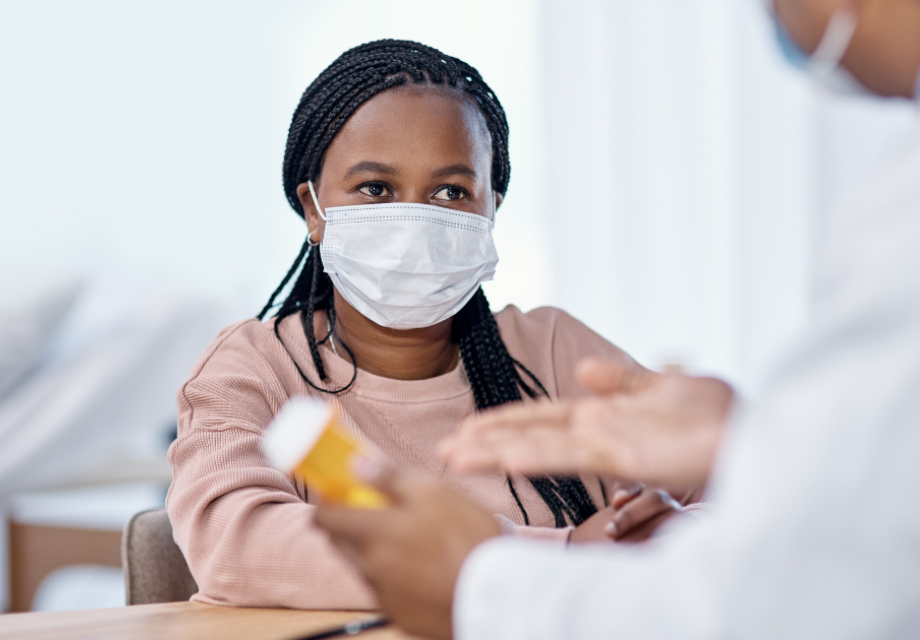Counting the costs of COVID-19 on HIV care for South African adolescents
Hester Phillips
19 May 2022
What toll has two years of the pandemic taken on HIV services for adolescents in South Africa?
The effects of two-years of the COVID-19 pandemic on HIV care for adolescents in South Africa have been significant.
Even before COVID-19, adolescents with HIV were less likely to get diagnosed, start and stay on antiretroviral treatment (ART) and be virally suppressed than older people.
Understanding if the COVID-19 pandemic has made the situation worse, and if so by how much, is crucial for understanding the current state of the HIV epidemic for this age group – and what the future consequences of this might be.
What are the effects of the COVID-19 pandemic on HIV services for adolescents?
Direct and indirect effects of COVID-19 can be seen in three main areas.
1. Healthcare resources have shifted from HIV to COVID-19
Most adolescents with HIV in South Africa use public health services. But public health resources have been moved away from HIV and reallocated to COVID-19.
Overstretched healthcare workers have had less time to establish relationships with adolescents with HIV. They have less time to check them for ART-related side effects, treatment difficulties and mental health issues. This means more adolescents with HIV are at risk of developing AIDS.
There has been a 60% decline in HIV testing and ART initiation among young South Africans (ages 15–24) during the pandemic. So there are now more adolescents with undiagnosed HIV. A lack of HIV testers and lockdown restrictions have led to this.
Resource shifts have also affected sexual and reproductive health (SRH) services. This has put more adolescent girls at risk of unplanned pregnancies. Adolescent girls are three times more likely to pass HIV to their babies than older women.
2. Extra barriers to healthcare
Lockdowns limited adolescents’ access to healthcare, including HIV and SRH services.
Adolescents with HIV often rely on caregivers to take them to appointments. But they are less likely to have had this support because many older caregivers have avoided health facilities.
Between February and April 2020, unemployment rose by 40% in South Africa and around 3 million people fell below the poverty line. More caregivers will not have been able to afford transport to take adolescents to HIV care appointments. They might not have been able to afford food, and ART should not be taken on an empty stomach.
This economic situation is likely to have increased transactional sex and child marriage, with adolescent girls particularly at risk.
3. A lack of additional support
School attendance, community involvement, peer support and nutritional support all help adolescents stay on ART. But these things were harder to access during lockdowns.
Mental health support for adolescents was also less accessible.
What does this mean for HIV and sexual and reproductive health services?
Disruptions to HIV care for adolescents will lead to increased viral loads, HIV transmission and re-infections. Services are likely to see more adolescent HIV infections and adolescents dying of AIDS-related deaths.
A lack of SRH services, coupled with more transactional sex and child marriages, is likely to lead to more teenage pregnancies, unsafe abortions, sexually transmitted infections and babies born with HIV.
There are ways to support adolescents to stay on ART in the face of reduced services. One strategy used for adults with HIV is multi-month ART prescriptions. But this might be less effective for adolescents who need active support and monitoring.
Using trained peers is a good way to provide adolescents with emotional and practical adherence support at home, online or on the phone.
It is also important to make youth-friendly mental health professionals available. This is especially pressing, as adolescent mental health issues have increased during the pandemic.
Get our news and blogs by email
Keep up-to-date with all our latest news stories and blogs by signing up to the Be in the KNOW news digest.
